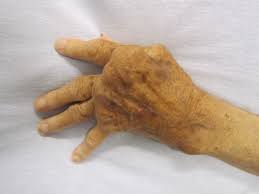Childhood Leukemia Physiotherapy
Leukemia is a cancer of the blood-forming cells, and is the most commonest type of cancer diagnosis in children. Unfortunately, the exact cause of leukemia is still unknown fornow.
The good news is that survival rates of children with leukemia is improving in years and research, and will likely continue to improve as scientists continue to research and improve medical technology and understand the disease better.
Generally what our physios do to help children with leukemia will be to
- improve and maintain their strength and function
- improve the negative effects of some cancer treatment
Contents
What’s childhood leukemia?
Leukemia is a cancer of the bone-forming cells that’s in the bone marrow, which is the soft center of bones and is where blood cells are produced.
When a patient has leukemia, their body will produce more and more numbers of immature blood cells which are called blasts. These blasts unfortunately doesn’t mature well, and over time, the increasing number of abnormal cells can slowly become more in amount in the bone marrow.
Most of the time, it’s the white blood cells that are affected, but that being said, other types of blood cells such as red blood cells or platelets can also be affected
Whenever there’s a decreased number of normal cells of these specialized blood cells, that’d mean negative impact to our body and system as a whole, such as:
- Lack of normal red blood cells will result in anemia, causing fatigue, tiredness, fainting spells and difficulty breathing.
- Lack of platelets can result in prolonged bleeding, easy bruising and higher risk whenever there’s wounds
- Lack of white blood can increase risks of infections, fevers etc
As leukemia changes the health of the blood itself, the illness affects the entire body.
Types of Leukemia
There’s 2 types of childhood leukemia: acute (short term but rapid) or chronic, which means slow but longer term.
Acute leukemia is more common in children and can be grouped into 3 types:
- Acute lymphoblastic leukemia (ALL) is more common in young children, usually between 2-4 years old. This specific leukemia happens more in boys, and in Hispanic or Caucasian children, and less often among African American children.
- Acute myelogenous leukemia (AML) can develop at any time during childhood, but it’s more common within the first 2 years of life as well as during teenage years. It’s diagnosed equally across genders and races. Other names for it are acute myeloid leukemia, acute myelocytic leukemia, or acute nonlymphocytic leukemia.
- Hybrid or mixed-lineage leukemia is a much rarer form of leukemia that has characteristics of both ALL and AML.
Chronic leukemia in children (2 types)
- Chronic myelogenous leukemia (CML)
- chronic lymphocytic leukemia (CLL)
Chronic leukemia tends to be more common in older children.
Juvenile myelomonocytic leukemia (JMML) is another rare type of leukemia, and is neither acute nor chronic.
What does childhood leukemia feel like?
Children with leukemia may experience:
- Fever
- Weight loss
- Bone pain
- Bruising or bleeding
- Weakness or fatigue
- Swelling or pain at different or multiple parts of the body
As the number of leukemia cells go up in the bone marrow, children progressively become weaker, more easily tired and feel generally unwell
The increased bleeding may cause symptoms such as
- bruises
- nosebleeds
- bleeding gums or
- pale or white-ish complexion
Sometimes the leukemia cells may travel and enter other organs, causing pain and swelling wherever they invade. In children, this may cause them to not want to play or participate. So if children do not play or hold back, they should be assessed by a doctor.
How is childhood leukemia diagnosed?
When children or teenagers show any potential signs that can be associated with leukemia, they need to be assessed by a medical doctor as soon as they can.
Parents need to share any medically relevant information, such as
- history of cancer in family
- symptoms they noticed
- how long the symptoms have been present
- any exposure to radiation
- etc
The doctors may call for specific tests such as blood tests, bone tests, biopsies and spinal fluid tests.
- Complete blood tests are to check how much each blood cell is present (to see if there’s decreasing amount of normal blood cells)
- Checking the cell’s appearance to see if there’s an increased number of abnormal or immature blood cells (red or white)
There’s more tests, and these tests may be repeated to check how the child progresses with or without treatments.
How physiotherapy can help

The goals of physiotherapy for children with leukemia includes
- reduce pain ie pain relief
- build and maintain strength, stamina and stability
- increase participation and activity in play etc
The most common medical treatment for leukemia is chemotherapy.
Chemotherapy is usually a mix of different drugs and can be administered in different ways, and can take 1, 2 or 3 or more years. Unfortunately, chemotherapy comes with some side effects, such as
- nausea
- vomiting
- hair loss
- mouth sores
- decreased blood counts
- changes in sensation
- particularly in the feet
- muscle weakness
- fatigue
As parents of kids, it breaks our hearts to see children having difficulties moving or getting up and about, so as physiotherapists and hand therapists, we will do our best to help them get back to life as normal kids as much as possible such as playing sports, playing with other kiddos etc
Where To Next?
- Go to Home / Start
- Learn and find out more about your pains (bones, muscles, joints, tendons, ligaments, nerves etc) at Pain Conditions & Injuries
- Visit our shop to see products we recommend for pain relief, heating, treatments and more
- Contact us






